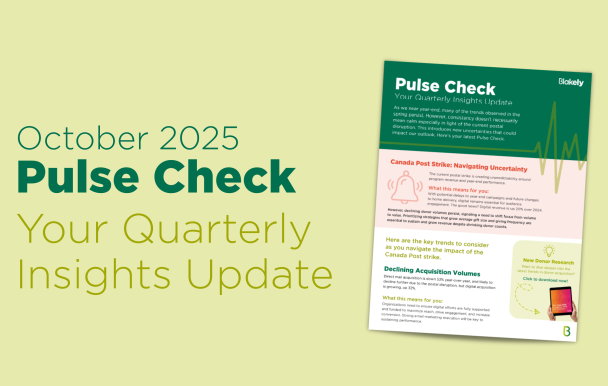Leading in Pajamas: Communication is Key
At Blakely, we’ve always been focussed on great communication both internally and externally, but we’ve realized now more than ever that the way you communicate, how often, and about what can have a huge positive or negative impact on your teams. So, this week as part of our ongoing Leading in Pajamas series, we’re sharing how we’re looking at communication and some tips for great communication during this crisis. And, of course, we would love to hear what you’re doing to communicate well with your teams!
The first thing we thought about was, how are we communicating? Now that we are all apart, how can we replace that in-person contact? Email, phone, Messenger systems, and video calls are the main way most businesses are communicating now, but which option you use as your main method can have a big impact on your teams. Whenever possible we are using video calls. We implemented Microsoft Teams as our main platform last year and it has made a huge difference, especially with the situation we find ourselves in now. There are so many different platforms (free and paid) out there that allow for video meetings; if you haven’t tried one yet, give it a shot! It’s the closest thing you can have to in-person communication, which is much needed while we are apart. The other communication tool we use is Yammer. This is where all our fun social updates go. We celebrate things and share recipes; it’s like Facebook but for your company.
The second thought was, how often we were communicating. Prior to this pandemic, we held monthly all-staff meetings. Since we started working from home, we have implemented weekly staff meetings via video conference. There is so much uncertainty and we want to make sure the entire team feels like they are in the loop on what’s happening. This kind of information-sharing and transparency has helped to ease some anxiety. In addition, teams are meeting regularly throughout the week to check-in and update on specifics.
What are you communicating?
It is not business as usual, so it’s not communication as usual for us. We’ve stepped up our social and support communications in addition to our increased business-related communications. It’s scheduled into our weeks to ensure that no matter what’s going on we make time for it. We’ve created different channels in Teams to keep people up to date on tools to reduce anxiety and support well-being. In addition to our weekly All Staff meetings, we’ve started doing Coffee Chats – 20-minute chats, sometimes with themes like ‘What is The Tiger King all about?’ But sometimes it’s just an informal chat to catch up with co-workers.
On a call earlier this week, we were discussing how much information you miss just by being physically apart. When you’re in the same space you might share an anecdote with a colleague while grabbing a coffee. When you don’t have that, you miss a lot, so we try to create opportunities for those shares. Plus, we have virtual ‘Happy Hour’ meetings on Fridays at 4pm; we call it The Blakely Blab and it’s just fun. Sometimes we have themes — last week’s was ‘What fashion trends do you most regret?’ Other times we just chat about our week. It’s a great way to end the week on a positive note.Here are a few tips we’ve assembled to improve communication.
1. Stay Positive
Listening to the news feels negative right now. If you can add a little positivity into your team’s day – it’s a win. We celebrate everything from small wins like adopting a new process while working from home, to big wins like the amount we’ve been able to help our clients raise with emergency appeals. Are there small wins you can celebrate?
2. Listen
Listen to your team; talk to them and really listen. How are they doing? Are there challenges or pain points that you can fix? Maybe it’s as simple as having them bring a computer monitor from the office to their home. We know two-way communication is the key to any great relationship so we’re building it into everything we’re doing.
3. Be Present
In order to truly be present, you need to be actively listening, which means paying attention to the person you’re speaking with. Now, in this new reality of working from home and home schooling etc., there are lots of distractions, but that’s not what I’m talking about. If you’re checking your phone or working on something else while you’re on a call with someone, you aren’t actively listening and, trust me, the person can tell.
4. Non-Verbal Communication Matters
By paying close attention to the person you are meeting with you may be able to pick up some cues. While they may say they’re okay, their body language could tell a whole different story. Alternatively, are you aware of what your body language is saying? Anyone who has had a teenager knows how eye rolls or scowls can make you feel. Video calls make it even more important to pay attention to what non-verbal cues you’re giving off with your body language.
5. Be real
Whether it be with sharing what you’re dealing with and how you’re feeling or about what’s going on with the organization/business – honest, transparent communication is key now more than ever. Right off the bat we were very transparent with our team and the feedback was immediate – they were so grateful for the honesty and transparency. Individually, in a meeting I had one day with a peer, I shared how difficult I was finding homeschooling while working, and they were so overjoyed that I was honest and not just putting on a happy face.
Bottom line — communication is more important now than ever and we want to hear how you are communicating. The more we share, the more we can help our teams thrive during this time. #physicalnotsocialdistancing









